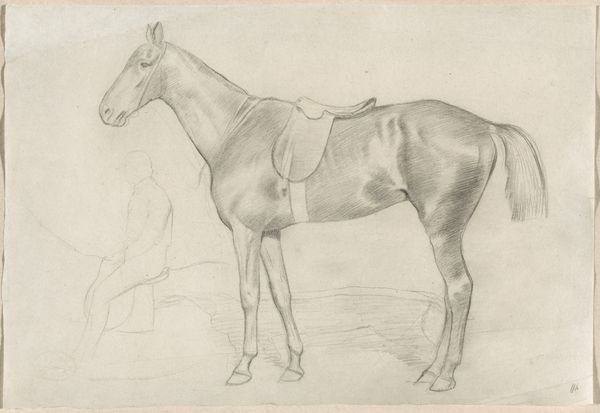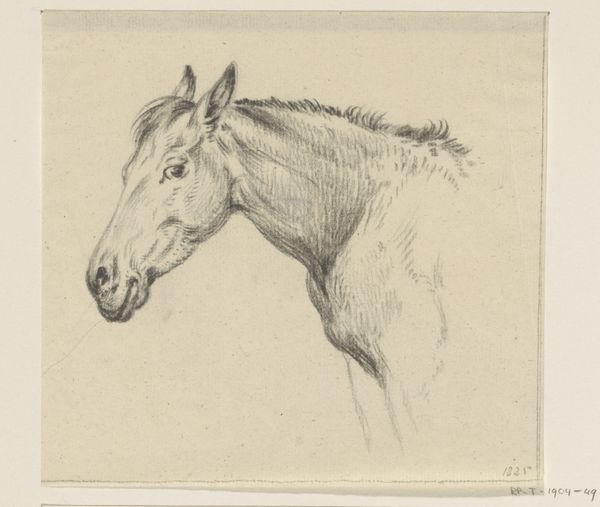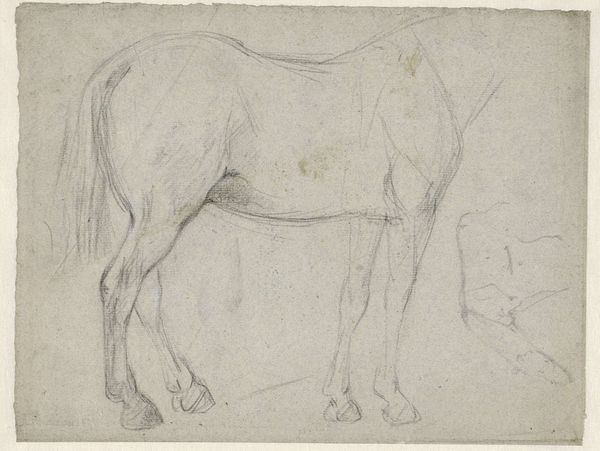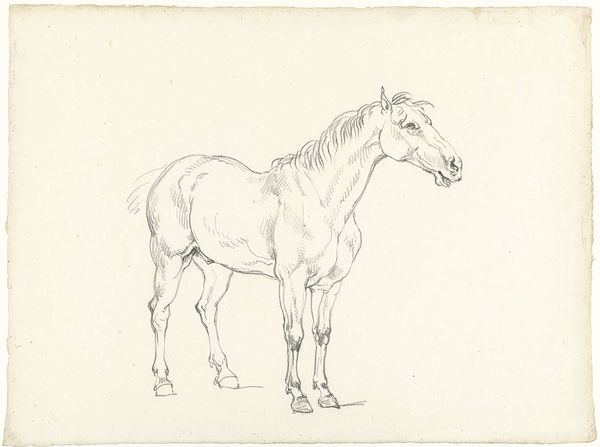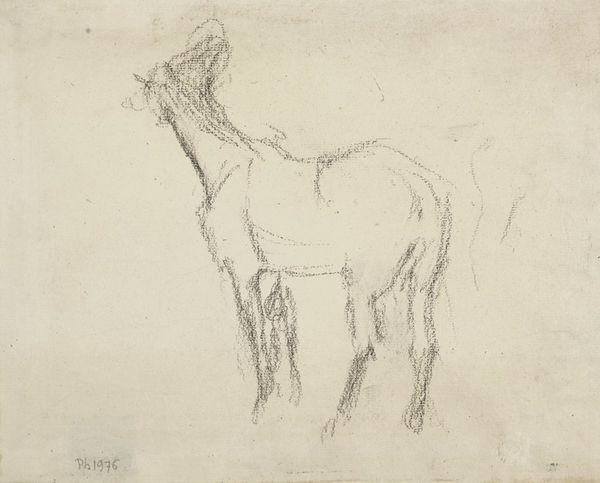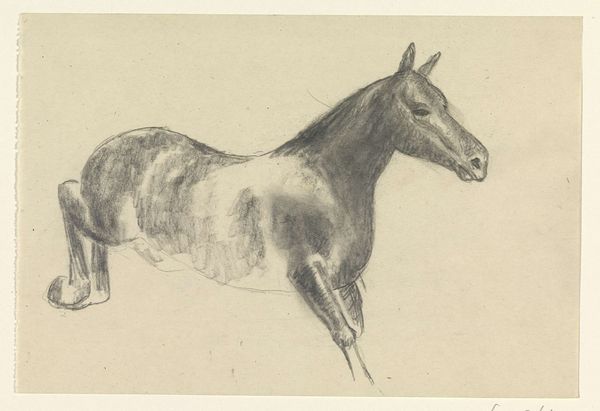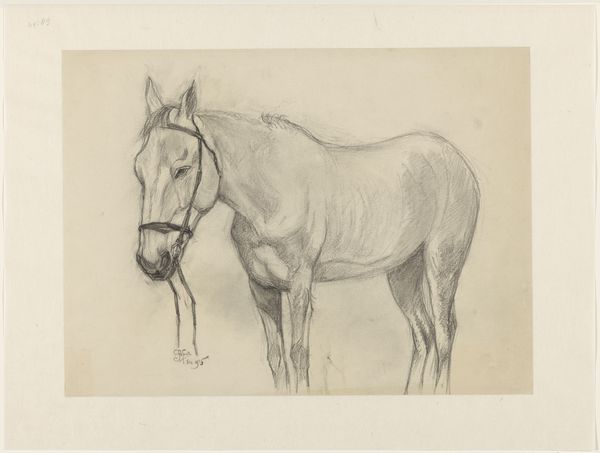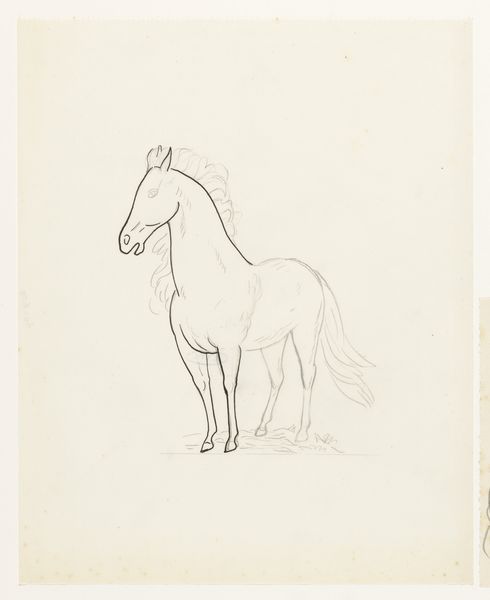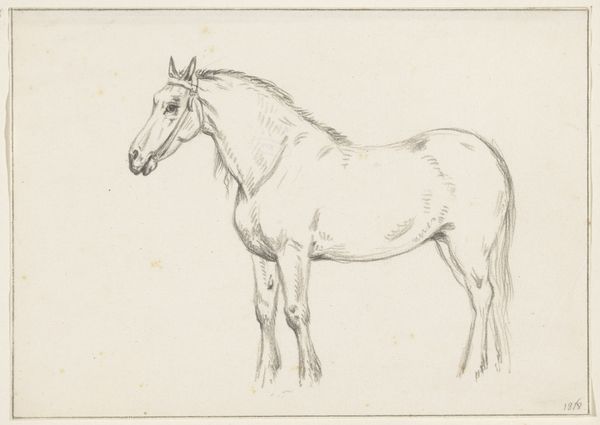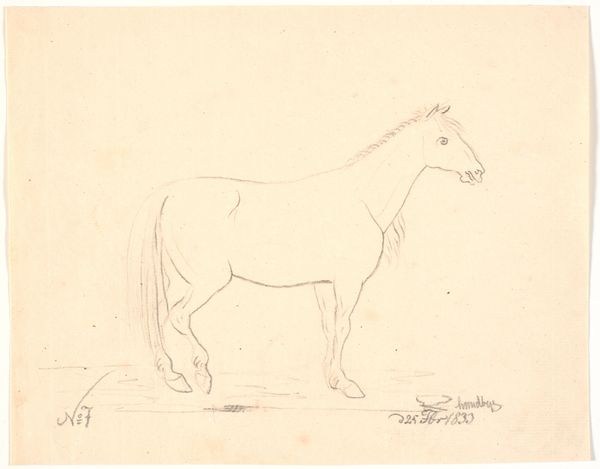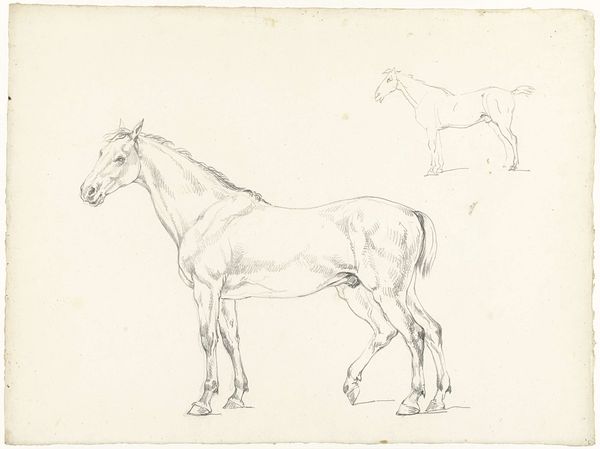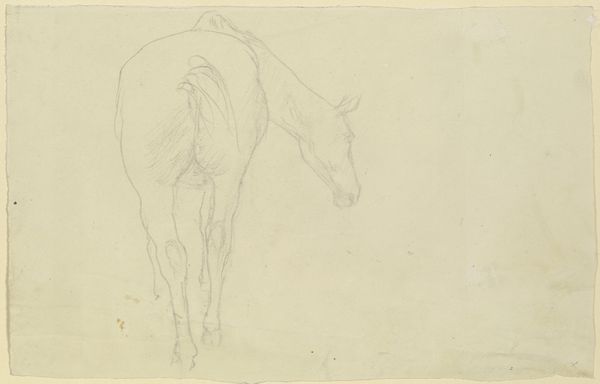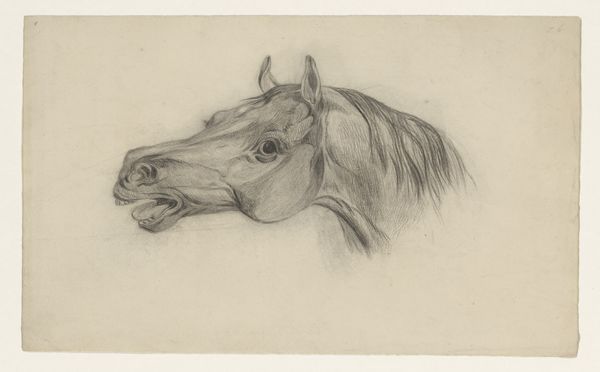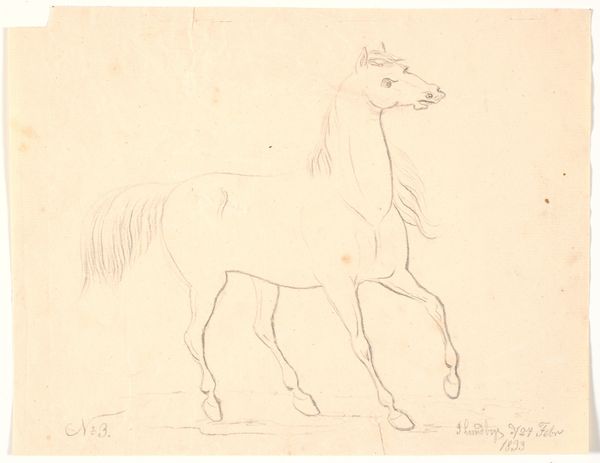
drawing, pencil
#
drawing
#
impressionism
#
pencil sketch
#
landscape
#
figuration
#
pencil drawing
#
pencil
#
watercolor
Dimensions: sheet: 35.3 x 53.9 cm (13 7/8 x 21 1/4 in.)
Copyright: National Gallery of Art: CC0 1.0
Curator: Looking at this delicate drawing, we see Edgar Degas's "Horse," created around 1890 using pencil on paper. What's your first impression? Editor: It’s ephemeral. There’s a vulnerability to it; the soft lines suggest a tentative capture of a being in motion, caught in a moment. Curator: Absolutely. Horses were central to Degas’s work. Beyond the race track scenes he’s known for, single studies like this highlight the cultural obsession with equestrianism during the late 19th century and beyond. Horses represented power, class, and even freedom. This image could be understood as a challenge to those ideals. Editor: And think of the horse as symbol itself. In mythology and even in psychoanalysis, it can stand for raw, untamed energy or instinct, the unconscious. Given the time period, you have the fading aristocracy clinging to these symbols of their past power while industrialization is rapidly changing society. The sketch's tentative lines suggest this moment of transition. Curator: Yes, Degas was deeply engaged with documenting societal shifts and the leisure classes of his era. The equestrian world served as both an arena for displaying social status and a subject for formal artistic exploration. He wasn’t just interested in anatomical accuracy; he examined movement, light, and the dynamic interaction between horse and rider. Editor: I'm struck by the incomplete quality. It amplifies that sense of transience, doesn't it? It is as though the artist is reaching for an idea just beyond his grasp. And yet, the horse is instantly recognizable, the symbol holds its potency. Curator: Indeed. Consider also the influence of Japanese prints at the time. Degas shared this flattened perspective and cropped composition with other Impressionists seeking to challenge academic norms and traditional approaches to history painting. Editor: Seeing it that way gives the work even more depth! I leave with a deeper appreciation of art as not just reflecting its age, but pushing beyond it into something new. Curator: And perhaps encouraging us to do the same. Thanks to images like this one, we gain insights into a defining historical shift.
Comments
No comments
Be the first to comment and join the conversation on the ultimate creative platform.
